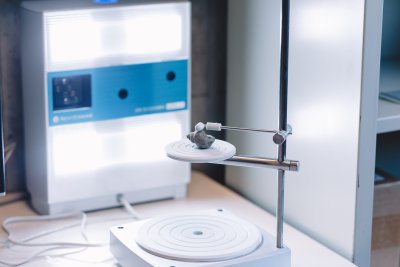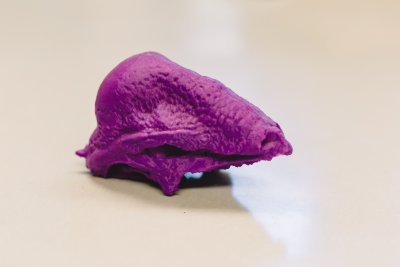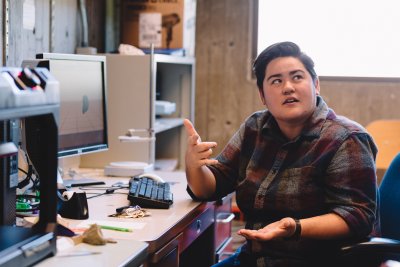WWU Professor Uses Lasers and 3D Printers to Bring Western’s Fossil Collection into the Digital Era
Lasers, 3D printers and million-year-old fossils are bringing together high tech and ancient creatures in a digitization project by Assistant Professor of Geology Robyn Dahl.
Dahl uses laser scans to make 3D computer models of the specimens from the department’s fossil collection. Those scans can then be input into 3D printers so students can have tangible items for study, while the 3D models are viewable online in what Dahl calls “the YouTube of digital fossil scans.”
“Digitizing fossils is popular now because it allows you to do different kinds of research,” said Dahl. “With digitized specimens you can take measurements much faster and more accurately. It also becomes much easier to collaborate with others and compare specimens,” she said.
In order to complete the scans, Dahl places the specimen on a rotating pedestal and points high precision measuring lasers at it. The lasers measure each nook and cranny of the specimen’s surface and within a few hours, Dahl has a three-dimensional digital rendering on her computer screen. Dahl then takes those scans and adds them to Western’s digital archive, which can then be used by students to view fossils in 360 degrees with a high level of accuracy. Those renderings are then added to a website called Morphosource (https://www.morphosource.org/) a repository for similar types of scanned fossils so they can be shared across different institutions.
“With an account you can go on there and look at different fossil scans from institutions all over the world. It gives us a lot more access to fossils that would be much more difficult to get ahold of in person,” Dahl said.
“Digitizing our collections is important because right now we have a notebook with hand-written records, said Dahl.
Using the same 3D printing process as Dahl uses, students will be able to print copies of rare specimens from other collections to study them in person just like they would for the items in Western’s collection.
“Digitizing is the future, it allows research to be done more easily and it provides more open access to the collections. It's a big movement in natural history collections right now,” said Dahl. “There is also a lot of educational uses for a project like this, such as printing out two different catalogs of leg bones in order to compare vertebrate groups.”
With the help of some high tech gadgetry and a dedicated professor, Western students and visitors will soon be able to hold, study and admire creatures that existed millions of years ago, that could have been unearthed on the other side of the planet.



